Chengdu, a city certified by UNESCO as a “City of Gastronomy,” effortlessly immerses newcomers in a whimsical temporal dissonance—one moment you’re gazing up at the panda sculpture gleaming against the glass façade of IFS International Finance Centre, the next you’re lured by the numbing-spicy aroma wafting from Qinghui Lane’s time-worn gray brick residences. This metropolis harmonizes a millennium of unbroken historical heritage with the vibrant energy of a burgeoning first-tier city, much like a simmering pot of spicy beef broth that blends history, culture, nature, and lively street life into a unique urban flavor.

Chapter 1:Decoding the City’s DNA – From Ancient Shu Kingdom to New First-Tier Powerhouse
Geographic Code
The Chengdu Plain, nestled like an emerald between the Qinghai-Tibet Plateau and the middle-lower Yangtze Plain, is crisscrossed by the Minjiang and Tuojiang rivers, with Longquan Mountains and Longmen Mountains forming natural fortresses. The Dujiangyan Irrigation System tamed the fierce Minjiang River, transforming it into a life-giving nectar that has nourished this fertile land since Li Bing’s hydraulic engineering feat. Ever since, Chengdu has earned its moniker as the “Land of Abundance” where “floods and droughts obey human will, and famine is an unknown concept.” With an annual average temperature of 16°C and over 80% humidity, the climate here nurtures hibiscus-like beauty in Sichuan’s women and facilitates the chili pepper’s evolution from mere seasoning to cultural icon.
Historical Layers Unfolded
The Jinsha Ruins, where the Sunbird Gold Ornament was unearthed, still whisper tales of the ancient Shu Kingdom’s glory 3,000 years ago within museum halls. The strategic wisdom of Zhuge Liang during the Three Kingdoms period, when he stationed troops and cultivated fields here, echoes through the bamboo shadows and crimson walls of the Wu Hou Shrine. During the Tang and Song dynasties, Chengdu earned the accolade “Yangzhou first, Yizhou second” as the southwest’s economic powerhouse. The thatched cottage of poet Du Fu bore witness to his patriotic lament “How I wish for ten thousand spacious houses to shelter all scholars,” while Xue Tao’s the Huanhua Paper immortalized literary legends like “The Jinjiang River’s silken waves mirror exquisite eyebrows.”
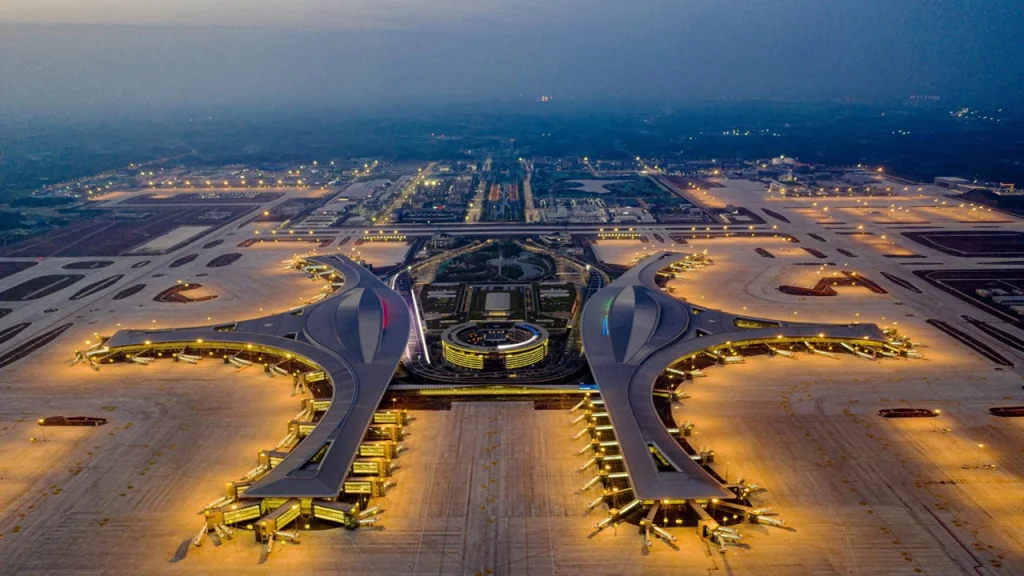
Modern Pulse
Today, Chengdu redefines spatial-temporal boundaries with its “dual airports + China-Europe Railway Express” infrastructure. Trendy flagship stores at Taikoo Li stand just three blocks away from bamboo-chair tea stalls in People’s Park, while the AI labs of the University of Electronic Science and Technology harmonize with the morning bells and evening drums of Wenshu Monastery. This city exudes a magnetic charm summed up by its slogan, “Once you arrive, you’ll never want to leave,” weaving the stories of 40 million residents and 280 million annual visitors into the bubbling hotpot grid, where each compartment simmers with unique Chengdu narratives.
Chapter 2: Time-Travel Journey Map: 7 Must-Visit Landmarks
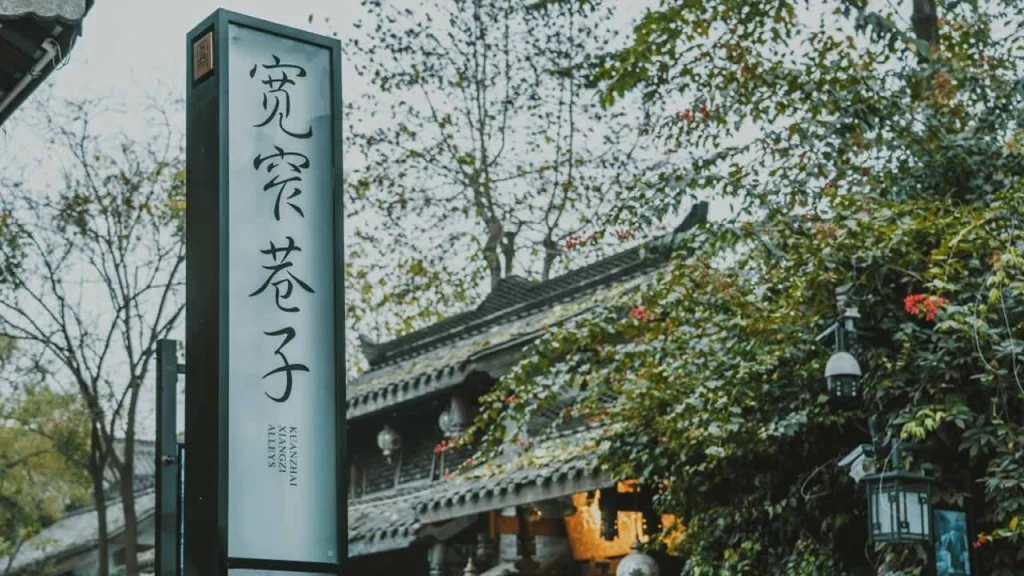
- Kuanzhai Alley: A Living Specimen of Old Chengdu
Nestled within traditional blue-gray brick and tile courtyards, this antique-style enclave embodies the authentic slow-paced lifestyle of Chengdu. Strike a pose under the iconic “Kailu” gateway in Kuan Alley for that viral social media shot, then wander to Zhai Alley’s “Sanlian Taofen Bookstore” to hunt for rare Sichuan-edition books. Around the corner, local ear-cleaning artisans await with bamboo tools called “Shu Er Lang” to introduce you to a realm of sensory relaxation. For a quintessential culinary experience, step into the “Little Dragon Conquers the River” hotpot restaurant—marvel at the dragon-coiled stage while savoring fresh beef tripe delivered straight from the slaughterhouse, dipped into simmering broth at your table.
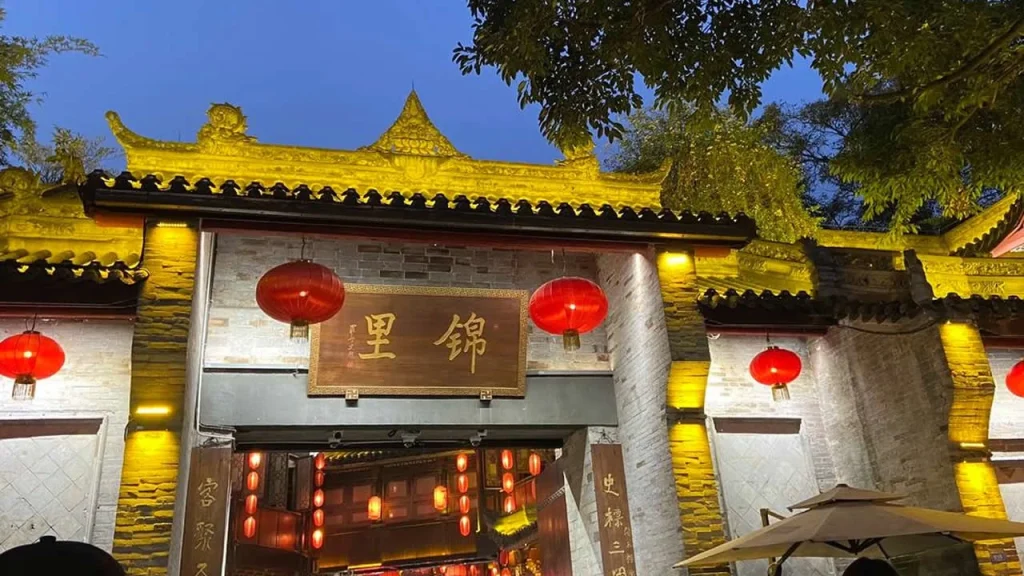
- Jinli Ancient Street: A Guide to Time-Traveling for Three Kingdoms Fans
As lanterns flicker to life at dusk, this historic street adjacent to Wuhou Shrine transforms into a live-action theater of Romance of the Three Kingdoms. Watch clerks wield Zhang Fei’s legendary halberd while hawking “Zhang Fei’s Beef” in the shop fronts, then head to “Brotherhood Pavilion” teahouse for Sichuan Opera’s face-changing and fire-spitting spectacles. Don’t forget to visit “Jinli Paper-Cut” studio, where master artisans can carve a personalized Shuhan dynasty totem just for you.
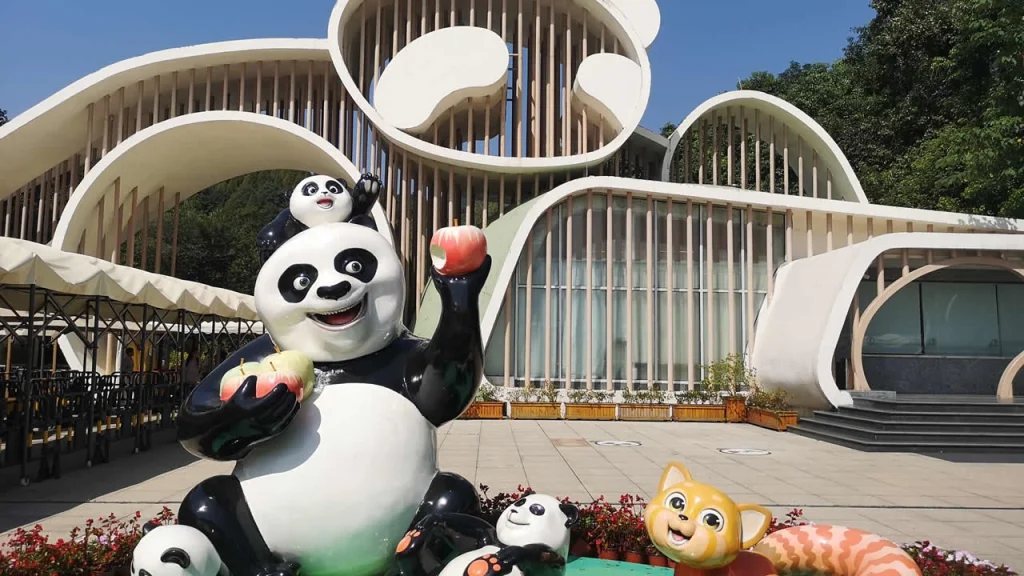
- Chengdu Research Base of Giant Panda Breeding: Cuteness Overload Zone
Arrive before 7:00 AM to witness “diva” Hua Hua stage her morning “escape” routine while munching bamboo shoots. In the Moon Nursery, fluffy panda cubs squirm like sticky rice dumplings, while sub-adults in the Sun Nursery perform acrobatics high in the trees—a real-life Kung Fu Panda scene. Before leaving, mail a postcard stamped with a paw-print postmark from the “Panda Post Office” at Enclosure 14, destined for your future self.
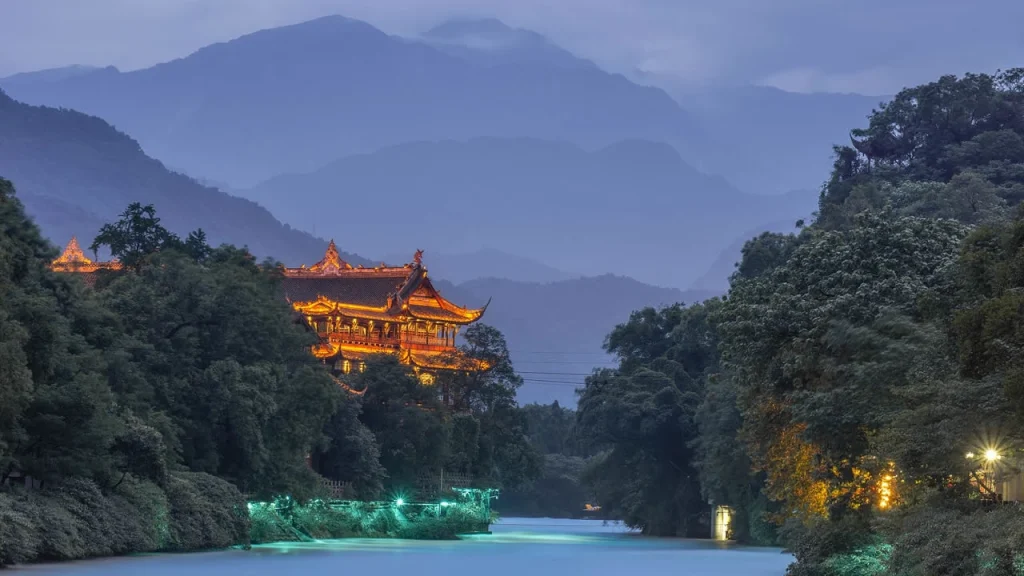
- Mount Qingcheng & Dujiangyan Irrigation System: A 2,000-Year-Old Daoist-Engineering Duo
At dawn, the front mountain’s Jianfu Palace echoes with morning bells as Daoist priests perform sword dances synchronized with mountain mists. Hike to the Back Mountain’s Baiyun Temple, where backpackers’ poles tap ancient stone steps beneath cascading waterfalls. Descend to Dujiangyan to marvel at the Bao Ping Kou (Treasure Bottle Neck), which splits the Minjiang River into inner and outer streams, and the Fish Mouth Levee—a 2200-year-old hydraulic masterpiece that still irrigates the Chengdu Plain through Daoist-inspired harmony with nature.
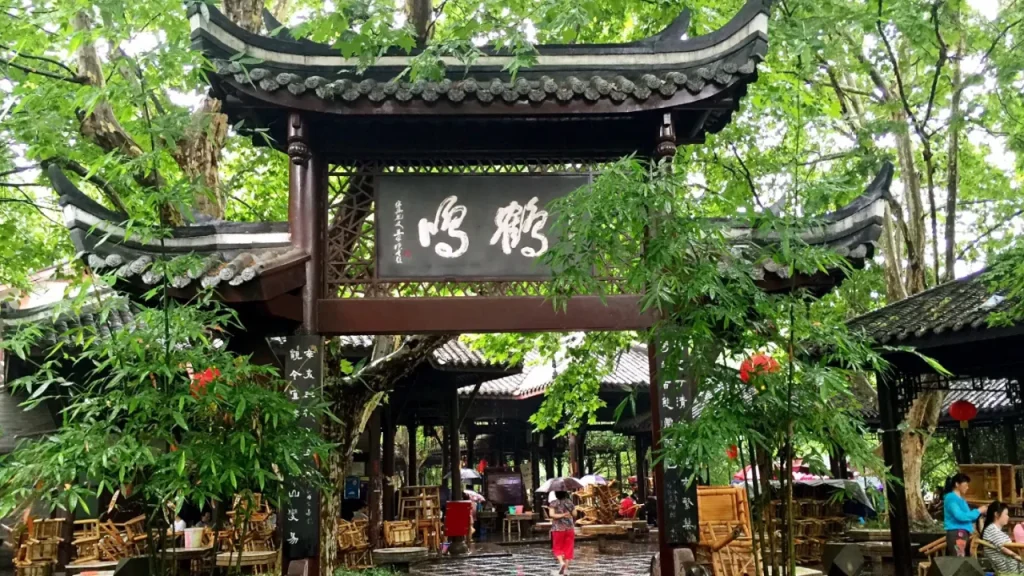
- People’s Park: A Microscope of Chengdu Life
Bamboo chairs at Heming Tea House are perpetually occupied, as lidded tea bowls dance in the hands of veteran patrons and ear-cleaners’ copper spoons and goose-feather brushes orchestrate an ASMR symphony. In the lakeside pavilion, retired uncles serenade Chengdu on their erhus while matchmaking aunts wave A4 papers like price tags for their children—a vivid tableau of urban folk culture.
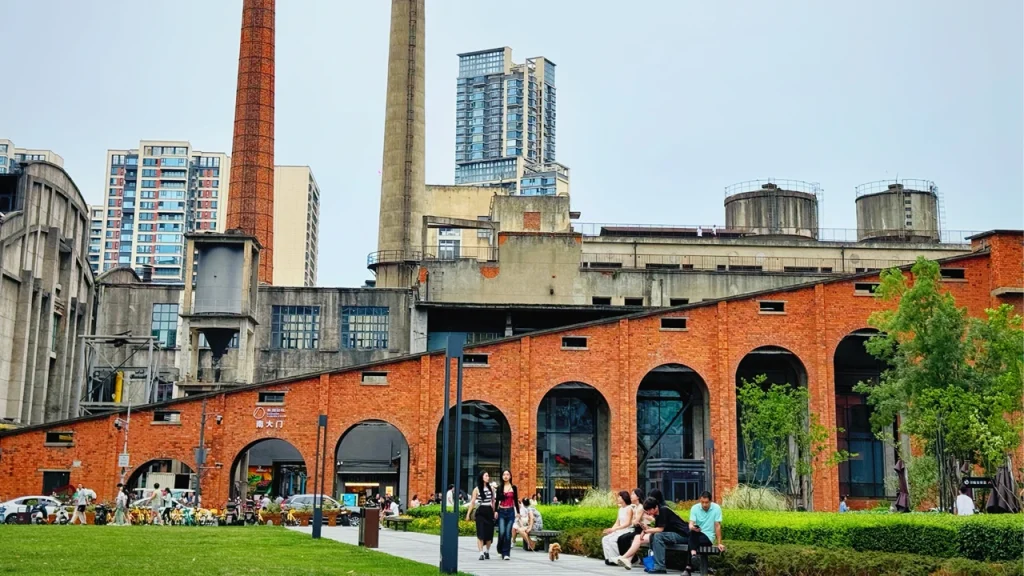
- Eastern Suburb Memory: Cyberpunk Rebirth of an Industrial Relic
The former Soviet-aided Hongguang Vacuum Tube Factory has morphed into a steampunk-inspired art colony. Strike a retro pose at Locomotive Square, catch avant-garde theater at “Chengdu Stage,” then lose yourself in the “ARTE Full Immersion Art Museum,” where digital projections transform red-brick factories into swirling galaxies of light.
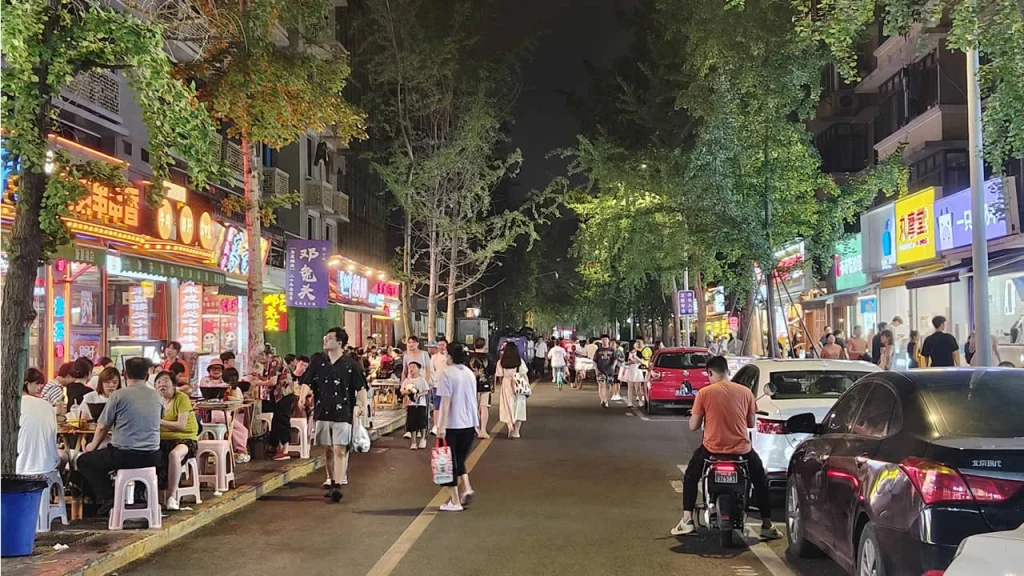
- Kuixinglou Street: A Foodie’s Holy Grail
This 500-meter alleyway houses Chengdu’s “Guardians of the Galaxy of Gastronomy”:
- Chengdu Foodie: Watch as “Bare-Run Shrimp Tuo Tuo” sizzle in a Oil splash, while sweet-and-sour ribs arrive cloaked in plum-scented glaze.
- Er Niang’s Chicken Feet: Tender braised chicken feet melt off the bone at first suckle, with secret-recipe chili oil seeping between your fingers.
- Mao Jiao Huo La: Rabbit heads are double-cooked—first braised, then stir-fried—until crushed peanuts and Sichuan peppercorns detonate flavor bombs in your mouth.
- Taste Bud Party: The “Nine-Grid Snack Platter” assembles a carnival of textures: chewy sugar-coated rice cakes, numbingly spicy cold rabbit, and “heartbroken jelly noodles” that make your nose tingle (in a good way).
- Chengdu Foodie: Watch as “Bare-Run Shrimp Tuo Tuo” sizzle in a Oil splash, while sweet-and-sour ribs arrive cloaked in plum-scented glaze.
Chapter 3: Chengdu’s Culinary Codex: 10 Must-Try Divine Dishes
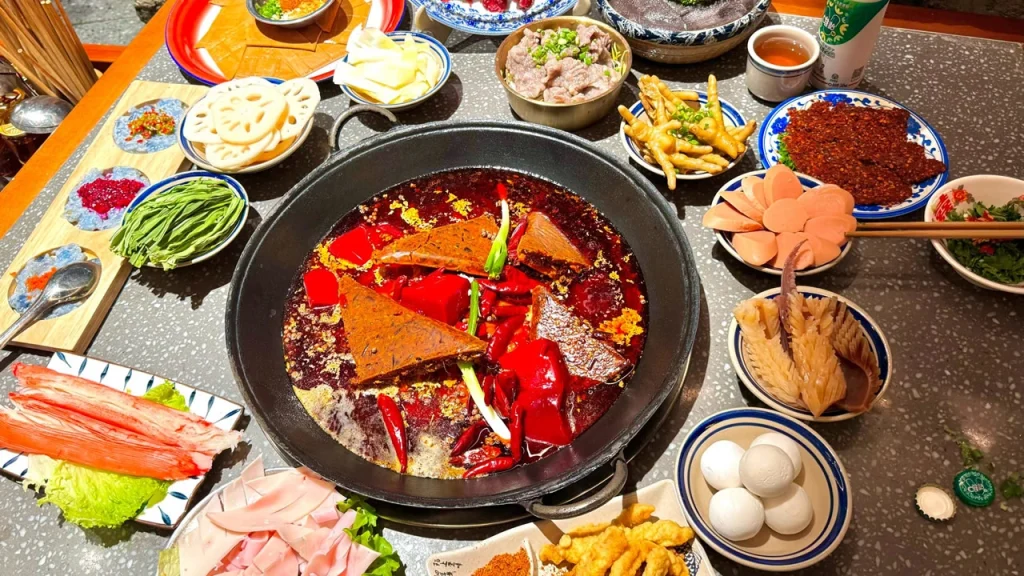
- Hotpot: The Underworld Simmering in Red Broth
At Diantai Xiang Hotpot, pair their butter-rich broth with Wei Yi soy milk. Shuda Xia’s “Flower Qian Gu” pork ribs come slathered in secret marinade, while Xiao Long Kan’s ice jelly demands three heaping spoonfuls of fermented glutinous rice. Memorize the mantra: “Yellow throat must be crisp, maodu tripe bubbly, duck intestines curled tight!”
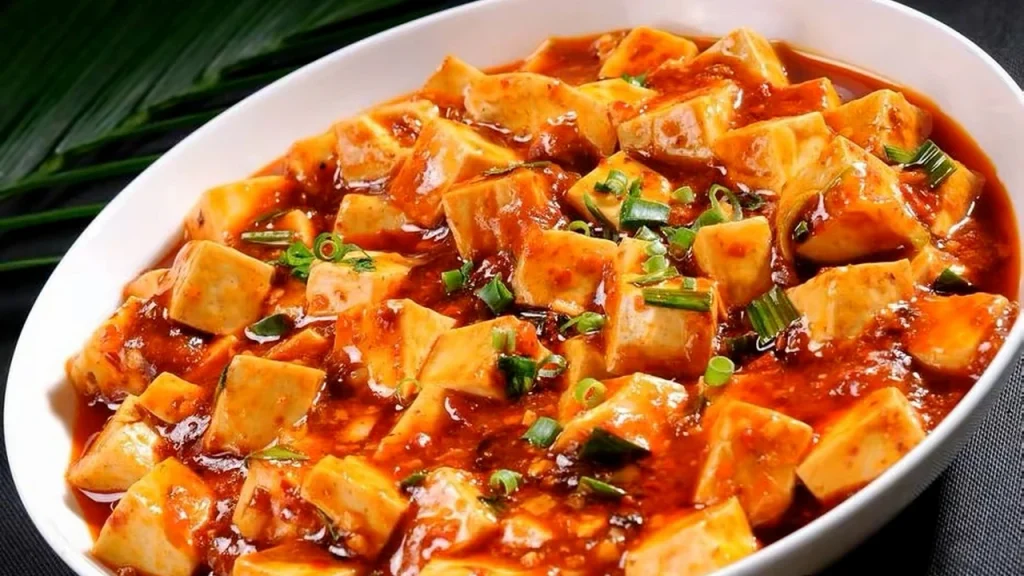
- Mapo Tofu: A Quartet of Spicy Symphony
The original hearth at Chen Mapo Tofu still roars—use gypsum-coagulated tofu, stir-fry minced yellow beef on the spot, grind Sichuan peppercorns minute, and let the final sizzle of scalding oil baptize the dish. That hiss? Pure soul.
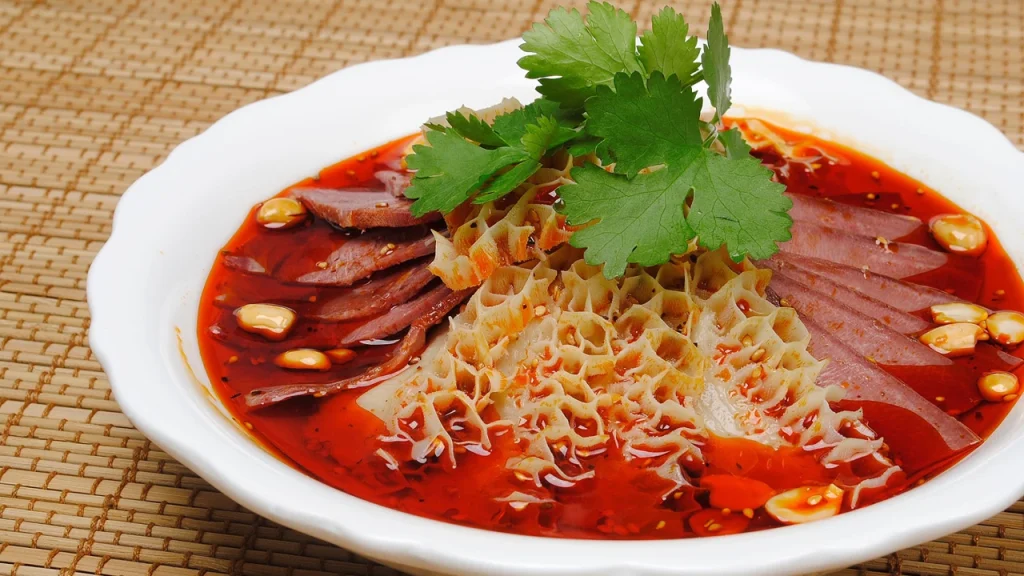
- Sliced Beef and Ox Tongue in Chilli Sauce: A Cold Dish Symphony
The shop guards its recipe: 2:3:5 ratio of ox head skin, heart, and tongue, simmered in red oil infused with 12 spices. The final sprinkle of parsley? A masterstroke.
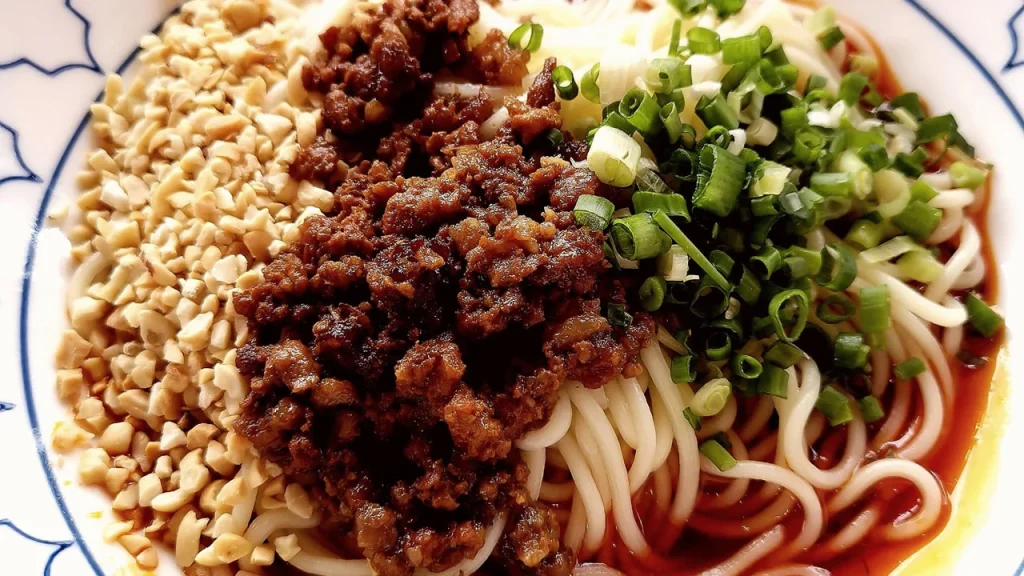
- Dan Dan Noodles: Street-Level UNESCO Heritage
Xiao Ming Tang’s recipe demands dry-fried pork mince, Yibin-style preserved mustard greens, freshly ground peanuts, and a secret weapon—a spoonful of lard at the bowl’s base. Therein lies old Chengdu’s flavor cipher.
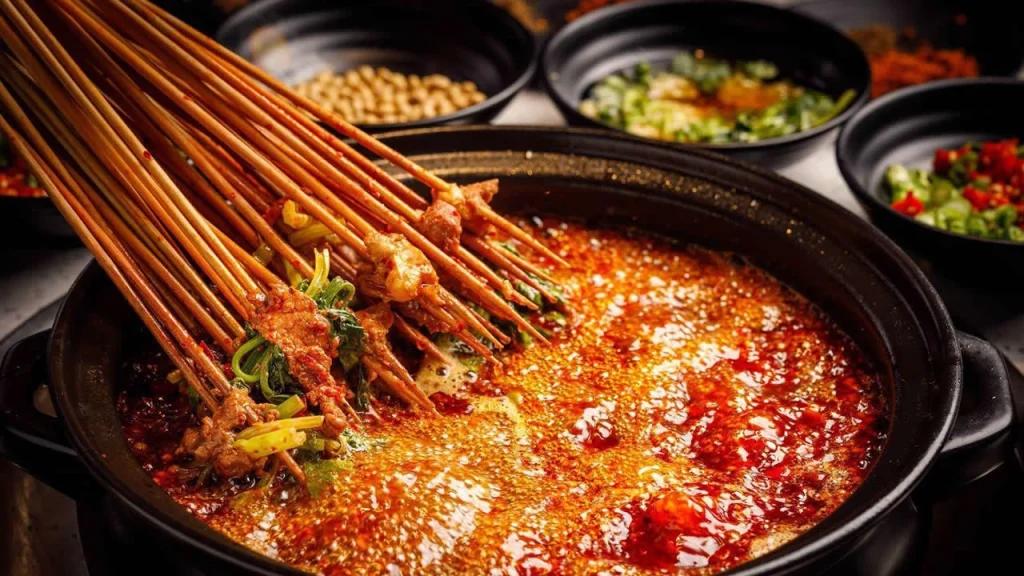
- Chuan Chuan Xiang: Late-Night Kitchen on Bamboo Skewers
At Gangguan Chang Wuqu, wrap tender beef around celery bits. At Ma Lu Bian Bian, dunk pig brain in fermented black beans. When settling the bill, yell: “Lao Ban Er, count them skewers right!”
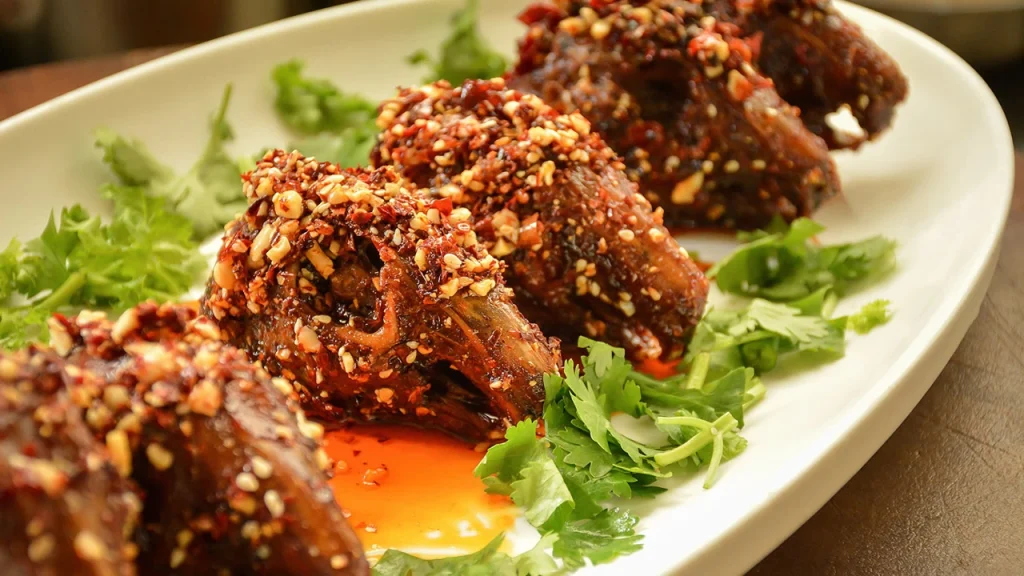
- Rabbit Head: Finger-Licking Philosophy
Shuangliu Lao Ma’s five-spice rabbit heads brine-then-braise; the spicy version drowns in chili flakes. Eat method: split jawbone, slurp brain, and curl tongue—that’s orthodoxy.
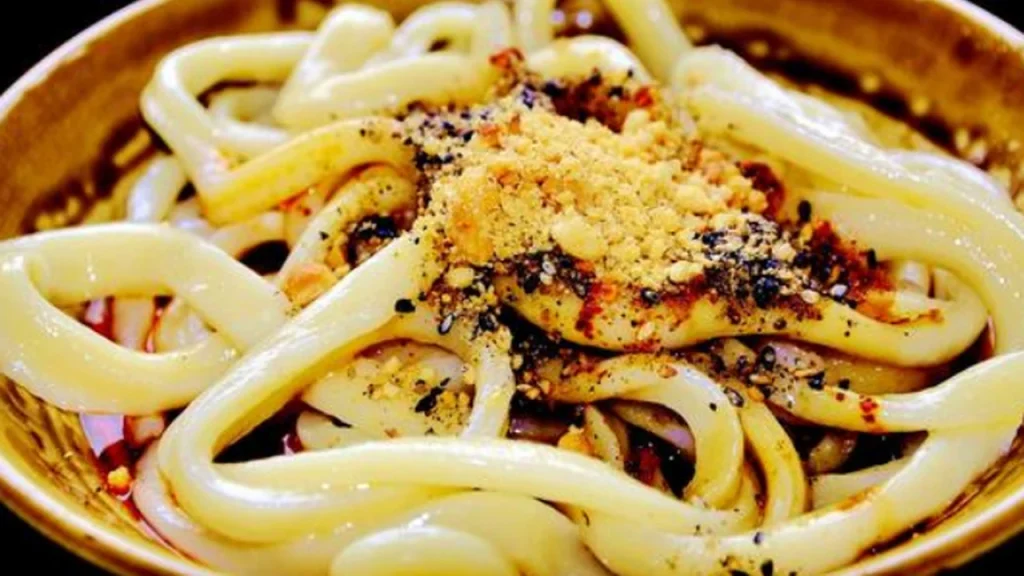
- Sweet Noodles with Chili Sauce: Sweet-Spicy Alchemy
Dong Zi Kou Zhang Lao Er’s version uses caramelized soy sauce, smoky chili oil, and thick noodles coated in sauce—a sweet-savory tango on the tongue.
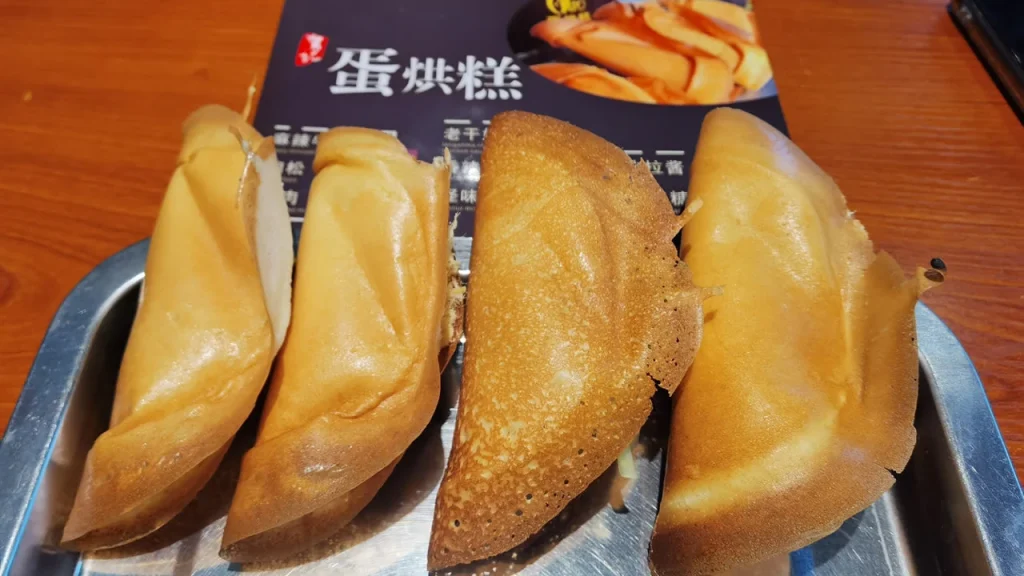
- Egg Pancake: Time Machine to Childhood
He Ji’s cream-pork floss pancakes wait for perfect griddle temp; sesame-peanut sugar is ground fresh. Watch the batter bubble in copper pans—whoosh—back to primary school gates.
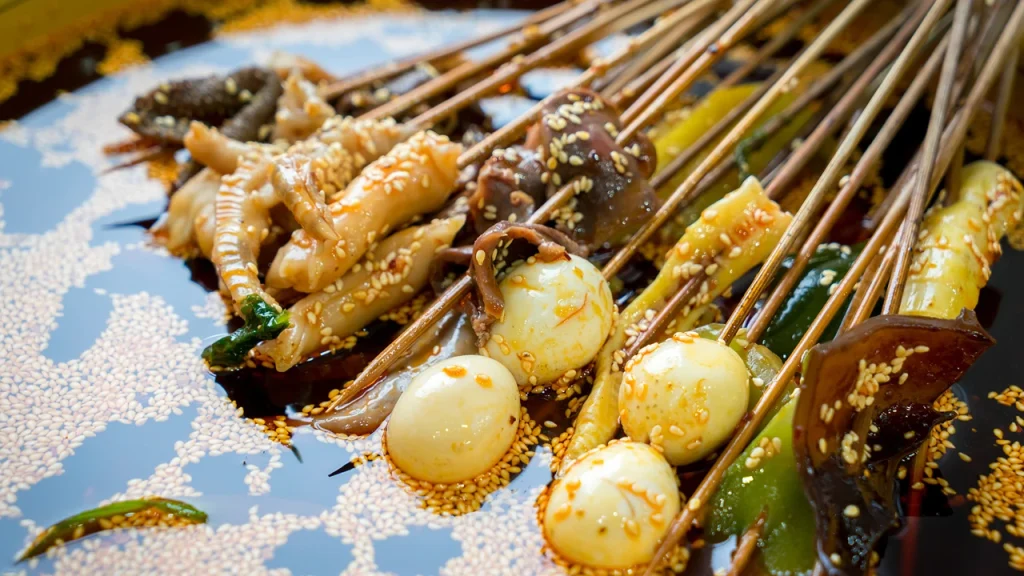
- Bo Bo Ji: Cold Cauldron, Hot Flavors
Ye Po Po’s red oil broth marinates 8 hours; Han Yuan peppercorns fresh-press for green pepper oil. Skewers dipped in this elixir? Your taste buds tap-dance.
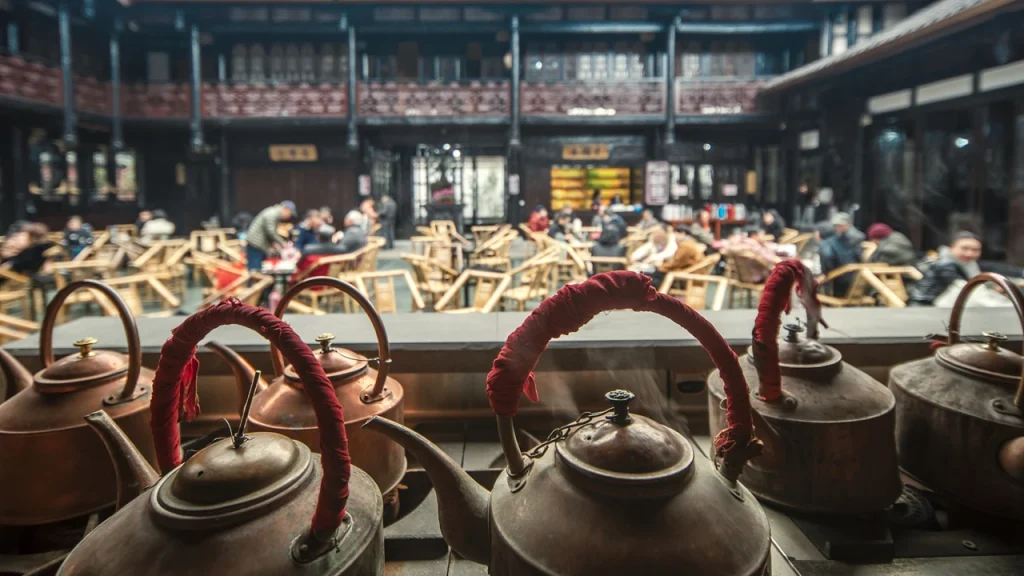
- Teahouse Culture: Chengdu’s Zen in a Bowl
At Heming Tea House, ¥15 buys you San Hua tea, a silver arc from the long-spouted kettle, and the cry of “Chan Cha Lo!” from the tea master. Half a day on a bamboo chair—that’s Chengdu’s ultimate truth.
Chapter 4: In Chengdu, Time is Meant to Be “Wasted”
The city’s magic lies in its permission slips: to browse luxury boutiques in Taikoo Li by morning, then vanish into Wenshu Monastery’s Xiangyuan Teahouse for an ear-cleaning ritual by afternoon; to pose in Hanfu for a Jinli photoshoot, only to dive into Jianshe Road Night Market for grilled ShaoPi; to lose yourself in Fangsuo Bookstore’s Mu Xin essays, then burst into tears (and laughter) over “Zhou Qian Qian’s Crispy Potatoes” in Jianshe Lane.
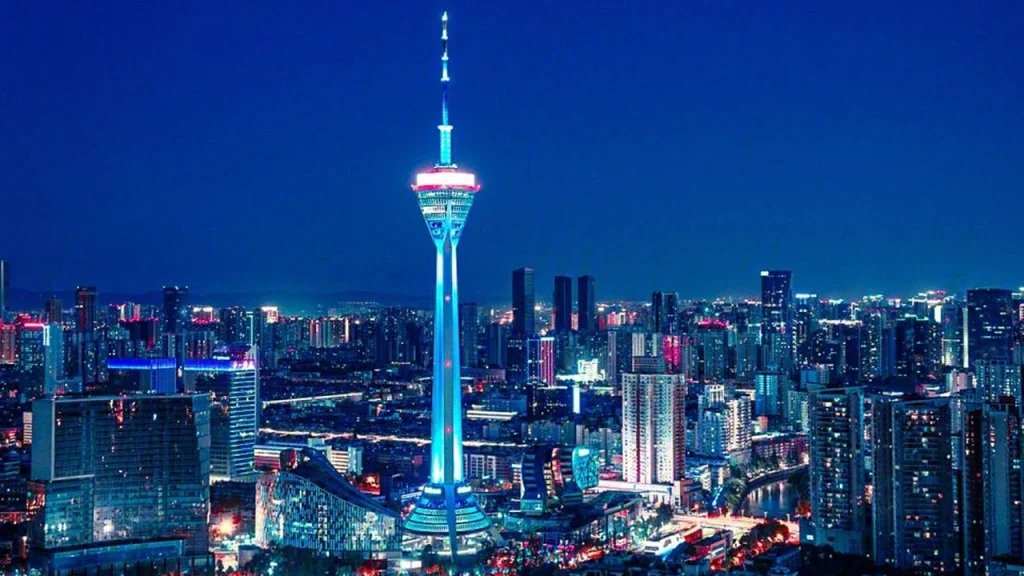
As dusk falls, neon ignites over Nine Eyes Bridge, the 339 TV Tower’s light show scars the sky, and in Yulin Road’s pubs, folk singers spin Zhao Lei’s unfinished Chengdu tales. Here, haste and leisure strike a surreal balance—like the hotpot’s twin broths, simmering separately yet harmoniously blending.
So don’t ask if Chengdu’s worth the trip. When you stand in Heming Tea House, watching tea ripple through bamboo shadows; when your tongue detonates with fireworks of spicy numbness; when the ear-cleaner’s goose feather brushes your eardrum—the answer bubbles up within you, hot and unmistakable.

Leave a Reply